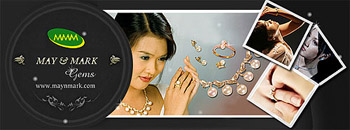| |
|
|
The 52nd Myanma Gems Emporium to run from 24 June to 6 July |
|
Date : 30 April, 2015
The Ministry of Mines announced on 30 April, 2015 it will hold the 52nd Myanma Gems Emporium from 24 June to 6 July in Nay Pyi Taw, inviting local and foreign merchants.
The central committee from 1 May will begin scrutinizing jade lots to be displayed at the emporium.
Myanmar citizens operating government-approved mining and gem product businesses, as well as members of the Myanmar Gems Entrepreneurs Association, can visit the emporium, according to the Ministry of Mines.
Foreign merchants can register to visit the emporium at the ministry’s website www.mge.gov.mm.
Last year’s Gems Emporium generated a record US $3.4 billion and saw the successful auction of 6,007 of 7,454 jade lots, 126 out of 436 gem lots and 224 of the total 342 pearl lots, according to
the ministry.
Over 4,000 traders from Thailand, China, Hong Kong, and Japan attended last year’s emporium, according to organizers.
Myanmar has started to hold annual gem sales since 1964.
Source : The Global New Light of Myanmar (Volume II, Number 10)
|
|
The 40th Annual
Myanmar Gems Emporium |
|

Over the Burmese border, last
month
saw the 40th
Annual Myanmar Gems Emporium being held in the
Rangoon, another notable gem trading capital. The
8-day emporium ran smoothly and ended on March 23rd
2007. The event fetched a total of just over USD23
million from 618 buyers doing business with 235
gemstone companies from China, France, Hong Kong,
India, Indonesia, Israel, Japan, South Korea,Macao,
Malaysia, Singapore and Thailand. The numbers were
down 24.1% when compared to last year's mid-year
emporium held in November 2002, which netted a total
of USD30.71 million. The Emporium showcases Burmese
production of high quality ruby, spinel, pearl, and
other gems, from the three main gem mining areas:
the famed Mogok Valley in the Mandalay division,
Mong Shu in Shan state and Phakant in Kachin state.
|
|
The 43rd Myanma
Gems Emporium |
|
Quality golden
pearls produced from
Myanmar to be displayed at the emporium.
YANGON, 15 March —
Gems and jade products, ornaments, jade figurines, private
shops, and mosaics to be sold at fixed price on the ground
floor, imperial jade, commercial jade, utility jade, and
uncut jade stones at the environs of the hall, and gems lots
and pearl lots to be sold through competitive bidding
system, as per the press release from the organizers.
According to the Deputy Minister Myint Thein, the quality
jade, gems and pearl lots will be sold through tender and
auction systems at the 43rd Myanma Gems Emporium this year.
. .
|
|
Myanmar Gems and Jade
Auction (2006) |
|
|
21st Myanmar Gems and Jade Auction will be held from 28th
August to September 1st at Myanmar Convention Center.
Inspections will start from 28th to 30th August and Bargain
and Auction will commence on 31st August to 1st September.
Buyers can register from 26th August and private sector
sellers can send their gems, jewelry, raw and finished jade
from 1st August 2006.
|
|
|
 |
 |
|
|
|
|
  
  
   |
|
|